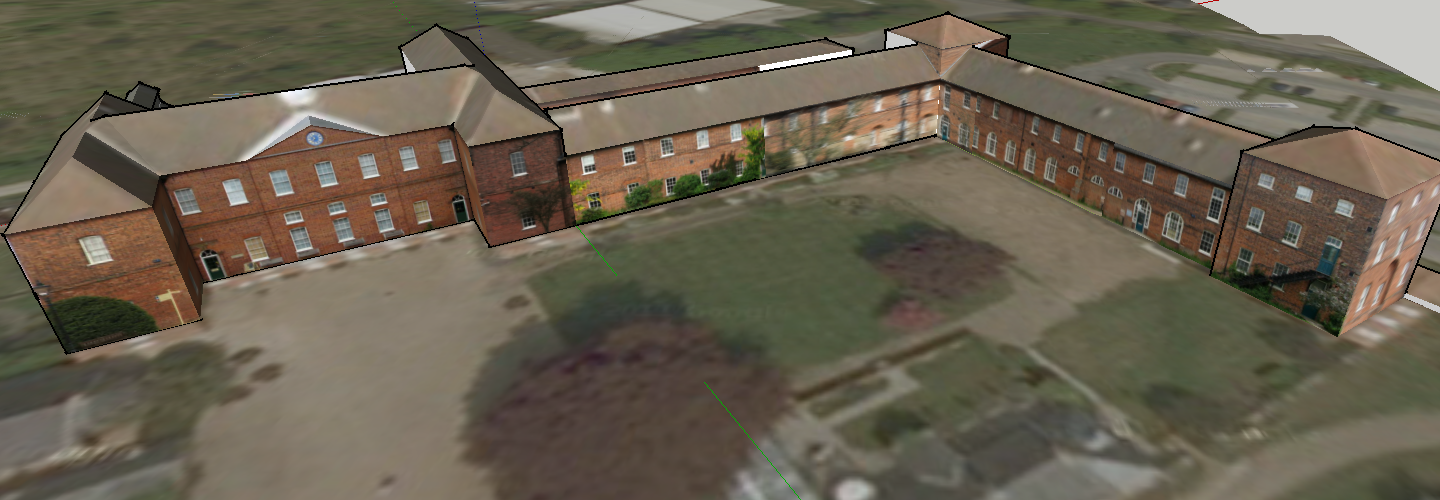Final Results
Digital Humanities: Playable 3D Historical Models
Advisor: Jeff Ondich
Background
For the past several years, Carleton historian Susannah Ottaway has been studying British workhouses from the 18th and 19th centuries. (Think "the place Oliver Twist worked.") As part of her research and teaching on the topic, Professor Ottaway has recently begun working with historian and digital humanities expert Austin Mason to apply digital tools to historical research and pedagogy.
In the Winter 2016 course HIST235 Bringing the English Past to (Virtual) Life, Professors Ottaway and Mason and their students experimented with a variety of digital techniques, one of which was the creation of a 3D model of the Gressenhall workhouse in Norfolk, UK. They used this model to let people do simple walks through the space to get a sense of space and scale from the interior of the buildings.

So far, so good. But Professors Ottaway and Mason are looking for more. For example, they would like to be able to create both computer-controlled and human-controlled characters to live in the space. They would like to be able to create rules of behavior for computer-controlled characters in hopes of running simulations to model daily life in the workhouse to see which models correspond well to known facts. They would like a convenient way to create quests (go spin some wool, serve gruel to all the workers, find the master,...) to help illustrate aspects of workhouse life. They would like to be able to attach annotations to elements in the 3D model (click on that tapestry over there to get links to research articles about it). And of course, they would like all of these techniques to be extensible to 3D models of places other than Gressenhall.
The central goal for this CS comps project will be to make 3D models like the Gressenhall model "playable"--both for human players and for fully automatic simulations. Playability will have many benefits, but the heart of the matter was expressed very nicely by one participant at a recent Day of Digital Humanities symposium held at Carleton. His project's goals were numerous, but he spoke particularly about using digital tools to "enliven students' historical imagination."
The Project
This project will have many parts, along these lines:
- Talking with Professors Ottaway and Mason and possibly other historians, archaeologists, etc. to learn more about their goals
- Researching relevant standards and tools, such as 3D modeling file formats, game construction frameworks, etc.
- Choosing a set of tools to use for our project
- Importing existing 3D models into those tools
- Building a system for merging human-controlled and computer-controlled characters (undoubtedly, some of this work will be built into the tools we choose)
- Developing tools enabling teachers/curators/etc. to create scripts, quests, character behaviors, etc. for use in the playable simulations
- Adding annotation capabilities to the playable spaces
- Creation of tools to create time-lapse videos of a space over its known history
- etc.